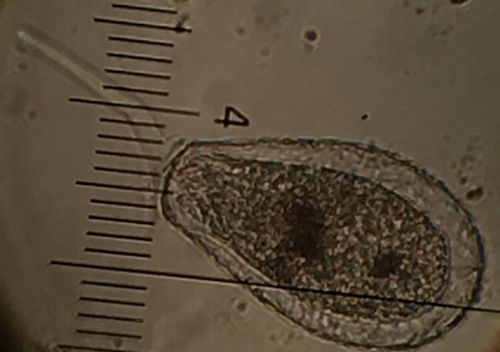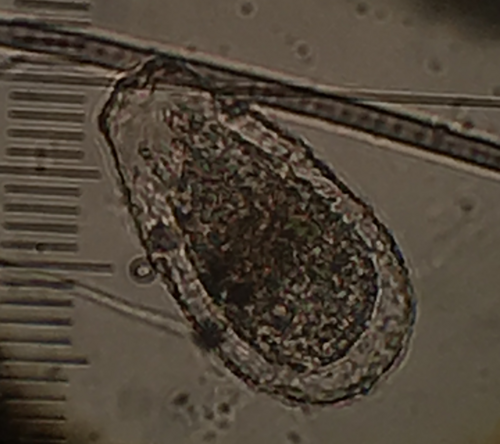Difference between revisions of "New page"
| Line 5: | Line 5: | ||
Why not start with the latest!? an example of predation (my first blatant example seen, 2021!)! It seems these amoebae can take on 1000 cell organisms too (like this nematode larva): | Why not start with the latest!? an example of predation (my first blatant example seen, 2021!)! It seems these amoebae can take on 1000 cell organisms too (like this nematode larva): | ||
| − | [[File:Predatoryamoeba.png| | + | [[File:Predatoryamoeba.png|600px]] this spiny testate amoeba showed great purpose in its approach to the worm! |
| − | [[File:Difflugiawithleg.png| | + | [[File:Difflugiawithleg.png|500px]] a ''Nebela'' , on the move... |
| − | [[File:Testate amoebasmaller.png]] another ''Nebela'', or maybe a ''Corythion'' (?) | + | [[File:Testate amoebasmaller.png|500px]] another ''Nebela'', or maybe a ''Corythion'' (?) |
| Line 18: | Line 18: | ||
Basically, they explosively contract into their little shell! <br>(However, tapping the plate or changing light won't induce this response, so what its trigger is remains uncertain.) | Basically, they explosively contract into their little shell! <br>(However, tapping the plate or changing light won't induce this response, so what its trigger is remains uncertain.) | ||
| − | [[File:Startled Difflugia.png]] a startled one, fully retracted in its shell <br> | + | [[File:Startled Difflugia.png|500px]] a startled one, fully retracted in its shell <br> |
| − | [[File:RecoveringDifflugia.png]] a recovering ''Nebela'' <br> | + | [[File:RecoveringDifflugia.png|500px]] a recovering ''Nebela'' <br> |
Here is a [https://drive.google.com/file/d/0B1jaPHOkH_42TUFETHBuTzRiX2c/view?usp=sharing link to a movie of timelapse of the internal motion] in one!! | Here is a [https://drive.google.com/file/d/0B1jaPHOkH_42TUFETHBuTzRiX2c/view?usp=sharing link to a movie of timelapse of the internal motion] in one!! | ||
| Line 27: | Line 27: | ||
| − | [[File:Bdelloid rotifersmaller.png]] | + | [[File:Bdelloid rotifersmaller.png|500px]] |
<br>This sort of rotifer can be very abundant, and is likely a ''Bdelloid'' type... They are fun to see move (very stretchy, with posterior attachment site)! | <br>This sort of rotifer can be very abundant, and is likely a ''Bdelloid'' type... They are fun to see move (very stretchy, with posterior attachment site)! | ||
| − | [[File:Ciliate.png]] <br> | + | [[File:Ciliate.png|500px]] <br> |
<br>The ciliates can go very fast, so it is hard to show their cilia, which are just visible in this image, and probably cover most of the surface of this protist... | <br>The ciliates can go very fast, so it is hard to show their cilia, which are just visible in this image, and probably cover most of the surface of this protist... | ||
| − | [[File:Emtpyspikytestesm.png]] This is probably an empty ''Corythion'' test (?) - with spikes! | + | [[File:Emtpyspikytestesm.png|500px]] This is probably an empty ''Corythion'' test (?) - with spikes! |
Revision as of 12:42, 22 January 2021
Here are some further images from the Hackuarium's old Olympus scope of Moss Menagerie creatures
They were observed at a 200x magnification and the images just taken simply through the ocular with my phone, then cropped...):
Why not start with the latest!? an example of predation (my first blatant example seen, 2021!)! It seems these amoebae can take on 1000 cell organisms too (like this nematode larva):
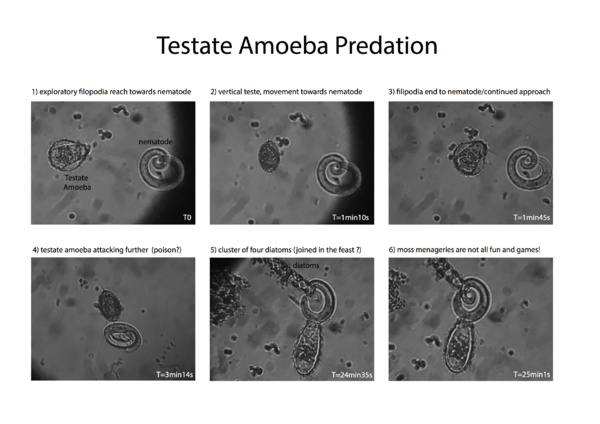 this spiny testate amoeba showed great purpose in its approach to the worm!
this spiny testate amoeba showed great purpose in its approach to the worm!
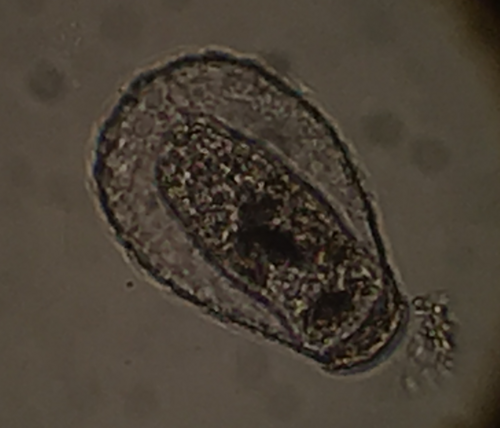 another Nebela, or maybe a Corythion (?)
another Nebela, or maybe a Corythion (?)
These Swiss Nebela have also been observed having a sort of 'startle' response, from which they recover...
Basically, they explosively contract into their little shell!
(However, tapping the plate or changing light won't induce this response, so what its trigger is remains uncertain.)
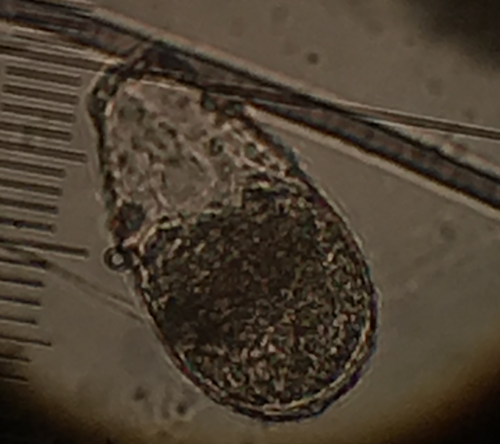 a startled one, fully retracted in its shell
a startled one, fully retracted in its shell
Here is a link to a movie of timelapse of the internal motion in one!!
(The speed of this video should be at about 15-fold real time, but it is taken from a screen streaming the images from a very low quality usb microscope hooked into the trinocular of the usual old scope in the Hackuarium.)
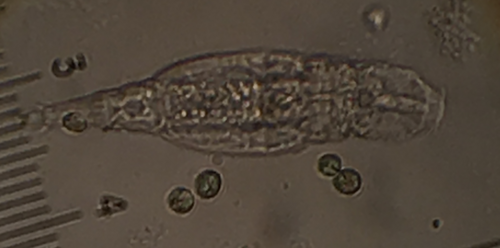
This sort of rotifer can be very abundant, and is likely a Bdelloid type... They are fun to see move (very stretchy, with posterior attachment site)!
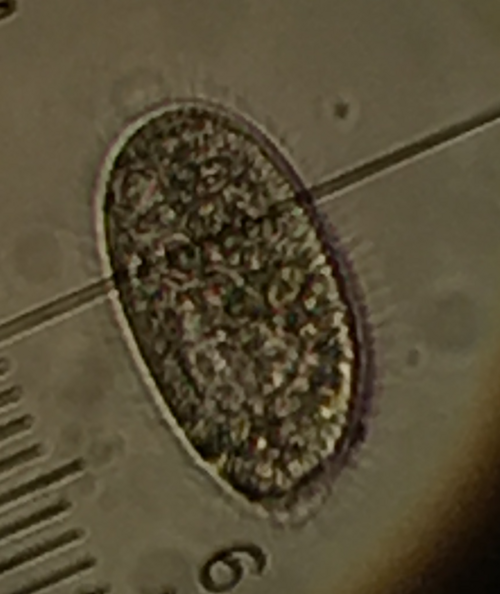
The ciliates can go very fast, so it is hard to show their cilia, which are just visible in this image, and probably cover most of the surface of this protist...
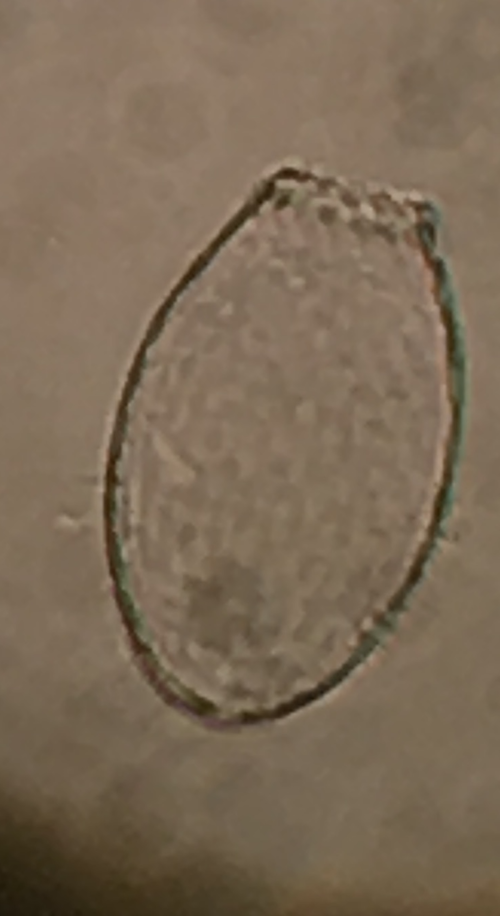 This is probably an empty Corythion test (?) - with spikes!
This is probably an empty Corythion test (?) - with spikes!
hope to link to a video of a water bear here!
(thanks for getting the new cultures, Vanessa! after your old one was poisoned by some Anabaena toxin...)
